


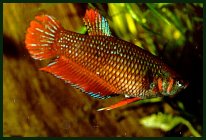
![]() Betta
splendens w.f. female
Betta
splendens w.f. female
![]() Belontia
signata
Belontia
signata
Betta fusca![]()
Betta pugnax![]()
Betta
splendens wf m .![]()
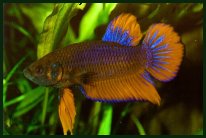
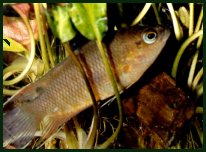
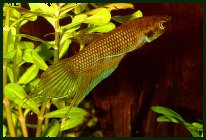
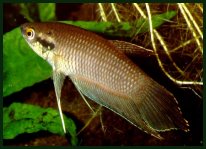
   | ||
| Labyrinthfish
page 3 | ||
 |
|
|
|
|
|
|
|
Besides
the species that build a foam nest there is still a rather big group of mouthbreeding
species. In the item "current animal" you got acquainted already with
the mouthbreeding Chocolat Goerami and the fascinating way they start mouth breeding.
On this page you meet, besides the well known Betta splendens, here the
wild form, a couple of mouthbreeding species: Beta pugnax and the related
Betta fusca. Who compares the animals on the pictures below will not be
astonished about that relationship. And it is possible that is turning out that
in both pictures it handles about the same species. The indicated place where
the can be found also point in that direction. They live in overshadowed and rather
fast streaming waters underneath overhanging growth on the banks. B. pugnax
at Penang and Kuantan and B. fusca on Sumatra. These species can best be kept in pairs. There is no drawback in |
keeping
several pairs in an aquarium sufficient large. |